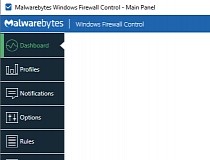

- WINDOWS FIREWALL CONTROL SERVICE ISSUE HOW TO
- WINDOWS FIREWALL CONTROL SERVICE ISSUE WINDOWS 10
- WINDOWS FIREWALL CONTROL SERVICE ISSUE WINDOWS

WINDOWS FIREWALL CONTROL SERVICE ISSUE WINDOWS
WINDOWS FIREWALL CONTROL SERVICE ISSUE WINDOWS 10
On top of that, Windows commands allow you to automate and script the task.ĭisabling Firewall on Windows 10 can be done with the netsh advfirewall set command to turn off the firewall individually for separate networks or all network profiles: If you know your way around, turning off the Windows Firewal l can be quicker than using the GUI options. In Windows, there is a command-line for most GUI operations. You can disable it for private and/or public networks. Check the box next to Turn off Windows Defender Firewall and click OK to save the changes.Select Turn Windows Defender Firewall on or off from the left-side menu.Click on Start, type in “Control Panel” and open it.To disable the Firewall on Windows, click on each of them and toggle the switch under Windows Defender Firewall.ĭisabling Windows Firewall is also possible via the Control Panel:.There, you’ll find three network types: Domain Network, Private Network, and Public Network – all of which are protected by the Windows Firewall.Click on Windows Security from the left-side menu.The easiest way to disable the firewall on Windows 10 ( version 1703 and later) is through the Windows Security app: If the built-in Windows Firewall is doing more harm than good, especially if there's another firewall program in place, here’s how you can disable the Windows Defender Firewall.
WINDOWS FIREWALL CONTROL SERVICE ISSUE HOW TO
Here’s how to do that, how to turn it off for a single program, and how to enable it again. If there is a legitimate reason, there are plenty of ways to disable Windows Firewall. Click OK to close the firewall properties window.Ģ.Windows Firewall is a security feature that protects your system from unauthorized access and disabling it is not recommended unless it is absolutely necessary.In each profile tab, select Off from the Firewall state dropdown list. There are three profile tabs in the properties window, corresponding to the three Windows Firewall profiles (domain, private, and public).

In the center pane, click Windows Firewall Properties.In Windows Server 2012 or above, select Windows Firewall with Advanced Security from the Tools menu. In Windows Server 20 R2, in the left pane, expand Configuration and click Windows Firewall with Advanced Security.To turn off the Windows Firewall with Advanced Security console Windows Server 2012 or above allows both of those methods and also offers the Set-NetFirewallProfile Windows PowerShell cmdlet.ġ. In Windows Server 20 R2, the firewall can be turned off using the Windows Firewall with Advanced Security console and netsh commands. There are still situations in which it is necessary to turn off the firewall, and there are supported methods for doing so that don't involve stopping or disabling the service. It can also cause numerous network-related issues. Stopping or disabling this service in Windows Server puts a server in an unsupported configuration. This article provides information on the supported methods of turning off the Windows Firewall in Windows Server 2008 and above.


 0 kommentar(er)
0 kommentar(er)
